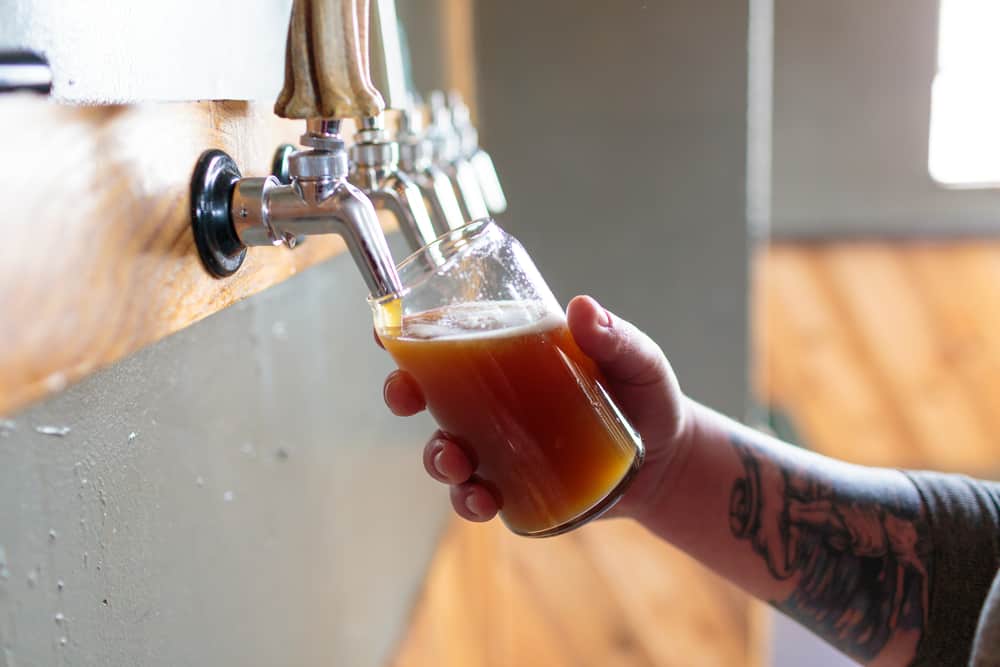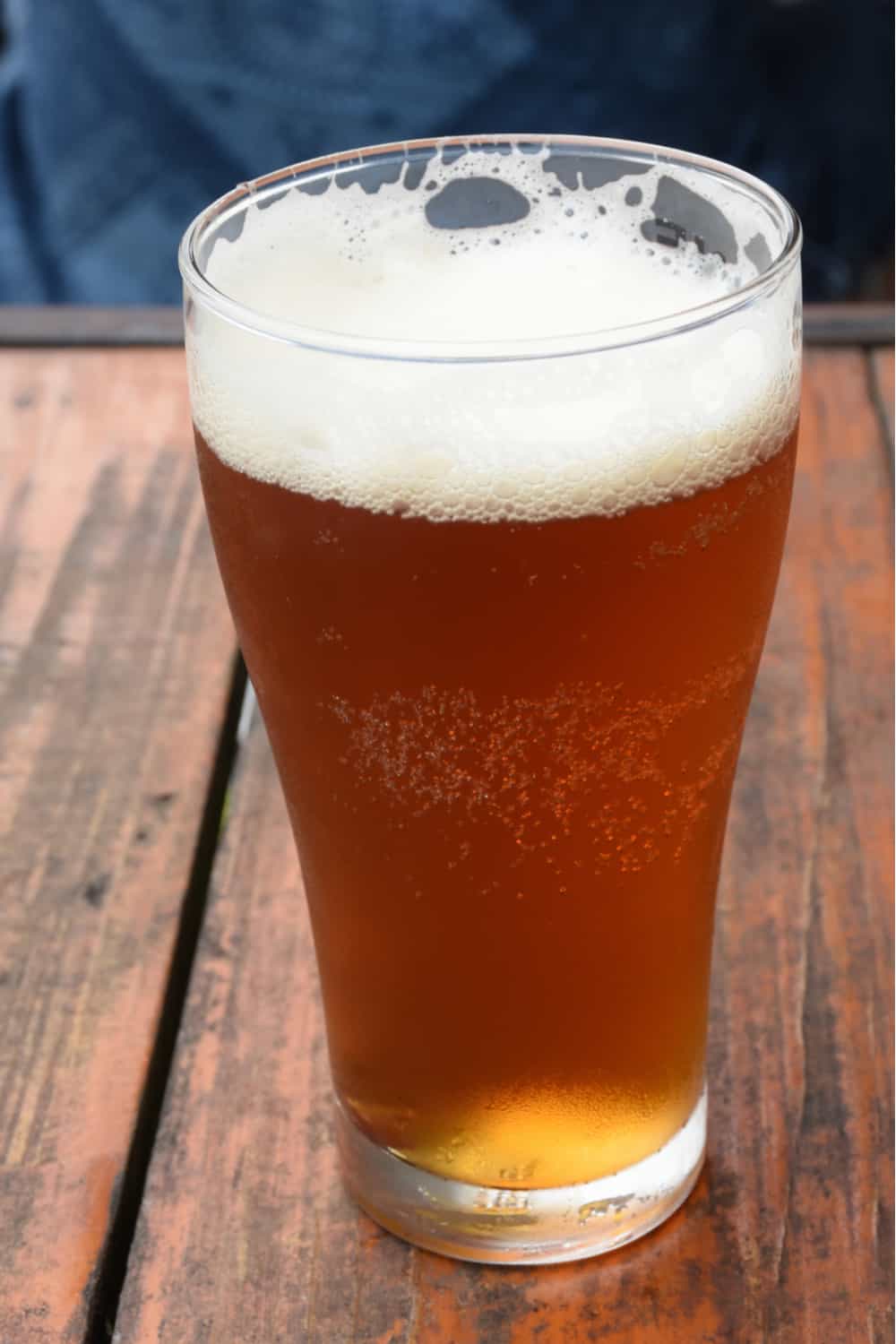In the increasingly fashionable world of craft beer, one style now enjoys almost unrivaled popularity, making it the undisputed darling of the movement: the IPA.
Deliciously hopped and often packing a respectable alcoholic punch, IPA lends itself particularly well to craft beer production due to the scope it offers for experimentation and creativity.
However, in the last decade or so, a new kid has shown up on the block. An edgy, elusive beer that defies precise definition, the Double IPA – also known as Imperial IPA or sometimes “DIPA” – has steadily been building a following and making a name for itself.
So, to help you understand what all the fuss is about, here we answer the question, IPA vs. Double IPA – What’s the Difference?
For a preview of some of the stuff we’re going to be talking about, you might also be interested in checking out this video before reading on.
How do you brew beer?
Before we talk about brewing double IPA – or just regular IPA for that matter – it will help if we take a few moments to remind ourselves how beer is produced in the first place.
In the simplest terms, beer is made by fermenting starch sugars, which usually come from malted barley, although other cereal grains can also be used.
The malt is boiled in water to release the starch sugars, creating a liquid called wort. Hops, a natural preservative, are usually then added to balance the sweet flavor of the malt as well as to help prevent the beer from spoiling.
Yeast is then added when the mixture cools, which ferments the sugars, turning them to alcohol and transforming the wort into one of the world’s oldest and most popular beverages, beer.
What is IPA(India Pale Ale)?

That’s the basics of brewing – so how do you brew an IPA?
IPA – which stands for India Pale Ale – evolved from pale ale, something that was already being brewed in 17th-century England, although people didn’t start referring to it by that name until the turn of the following century.
Back then, dark beers like porter were popular, but when brewers began using malts that were more lightly roasted using coke (a type of processed coal), a much paler beer resulted, hence the name.
Fast forward another hundred years, and the British Empire was reaching its zenith. The vast “empire upon which the sun never set” boasted colonial possessions around the world, and among these, India was preeminent.
A steady stream of ships plied the route between England and India, undergoing a journey of four to six months to carry all manner of goods between the Indian colonies and the motherland, including shipments of beer.
One type of beer that survived the voyage particularly well was a type of generously hopped pale ale.
The traders soon realized that, rather than spoiling during the journey, this type of beer actually benefited from the long sea voyage, and demand for it in India quickly grew.
This demand then spread to other British possessions, and the beer was also greatly sought-after in England itself.
This hoppy style of beer soon acquired the moniker “India Pale Ale” – IPA – and it remained popular throughout the British Empire right up to the First World War.
IPA(India Pale Ale) and the craft beer revolution
After enjoying great popularity for many years, IPA began to fall out of favor from the beginning of the 20th century.
Although it never disappeared entirely, it became far less common and was gradually supplanted in Britain by continental-style lagers.
However, from the 1970s, it began to undergo a renaissance on both sides of the Atlantic.
In Britain, interest in “real ale” began to take hold, and IPA began to make a comeback.
At the same time, with the nascent craft beer movement in the US, especially on the West Coast, creative brewers began experimenting with older, almost forgotten beers styles.
In particular, American craft brewers began brewing IPAs coupled with American hop varieties while also incorporating new brewing techniques into their production.
As a result, a unique type of American IPA appeared that was quite distinct from its British progenitor, and it is this style that has since become the poster boy for the whole American craft brewing movement.
There are now two major well-established IPA styles in the US. The first is known as West Coast IPA, a highly hopped, crisp beer with fruity citrus notes; the second, New England IPA, is an unfiltered cloudy version that sometimes goes by the name of hazy IPA.
There are also some other less famous or less clearly defined American IPAs, of which the best known is East Coast IPA.
So what’s a double IPA(DIPA)?

In this atmosphere of creativity and experimentation, with brewers constantly striving to push boundaries and test what was possible, it is hardly surprising that somebody began to wonder, since hops are so popular, what would happen if we throw in a whole load more?
And that’s more or less what happened.
However, the thing about hops is that they are extremely bitter, and just adding more hops is a sure way to spoil your brew.
If you want more hops – and you want a beer that you can actually drink – you need to be able to balance the bitter hoppiness by using more malt.
But if you add more malt, in simple terms, you have more sugar, and that will lead to a higher alcohol content.
It’s not an easy balance to find, but if you get it right, a double IPA gives you more of everything.
They take longer to brew, they offer more hoppy bitterness, they have deeper malty undertones…and they contain more alcohol – double IPAs usually come in at around the 7.5-10% ABV mark.
In other words, double IPAs are big and boisterous hop explosions that also pack enough booze to knock your socks off.
What’s the flavor profile of a double IPA(DIPA)?
As we have already alluded, double IPA is a relative newcomer to the scene, and as such, a clear and generally accepted definition has yet to be established.
In fact, there is some controversy over the naming of this beer since, although descended from IPA, some would claim that this is an entirely new beer style that deserves its own name, perhaps one that references its Californian origins.
Furthermore, although double IPA is a distinctly American creation, due to the global influence of the craft brewing movement in the US, brewers around the world have also begun experimenting with the double IPA style.
The result of all this is that when it comes to double IPAs, it’s still almost a case of “anything goes”, and any extra-hoppy beer can be given the title of “double IPA”.
Of course, when taking your first sip of a double IPA, you expect to be met by the unmistakable bitterness of the hops.
This is likely to be the predominant flavor of the beer, and if it is one brewed using American hops, you can also expect plenty of fruity notes, especially citrus, along with pine and even flowers.
Due to the extra malt required to balance the hops, you are likely to be able to detect stronger undercurrents of malt too. Double IPAs are usually medium bodied, and in terms of appearance, often have a deep amber or rich golden color.
However, since this style hasn’t been around for long and is still at the forefront of brewing innovation, you can also expect to find many variations on these flavor profiles – although drinking a double IPA will always be an intense experience.
What’s an Imperial IPA?
You will sometimes also see beers labeled as “Imperial IPA”, but this is simply another term for a double.
This appellation derives from the late 19th century when strong English stout was brewed for export to the Russian court. These beers were typically stronger than average, and it has been suggested that they were brewed with a higher alcohol content to help them survive the journey.
This is almost certainly false, however. The truth is far simpler – they were brewed stronger because the Russians just preferred drinking stronger beer!
In any case, following this usage, double IPAs are also sometimes referred to as Imperial IPAs to indicate their higher alcohol content.
You may also occasionally hear people claiming that “double IPA” refers to the fact that “Imperial IPA” has two “I”s, effectively giving us “IIPA”.
This is not correct, however. When we talk about a double IPA, we are using “double” in the same way as “double” (or “dubbel”) is used in the Trappist brewing tradition – and not because Imperial IPA has two “I”s.
An exciting all-American take on the IPA
In American culture, bigger is often seen as better, and as a beer that packs in more hops, more malt, more bitterness and, of course, more alcohol, the double IPA fits perfectly into this tradition.
If you’ve tried a “regular” IPA and were delighted by the distinctive enhanced hoppiness that often comes as a surprise the first time it’s experienced, you may well enjoy taking things up a notch and sampling a double. For some, this might be one step too far – but for others, the intense hops explosion of a double is the ultimate IPA experience.